- Oct 3, 2018
- 3,598
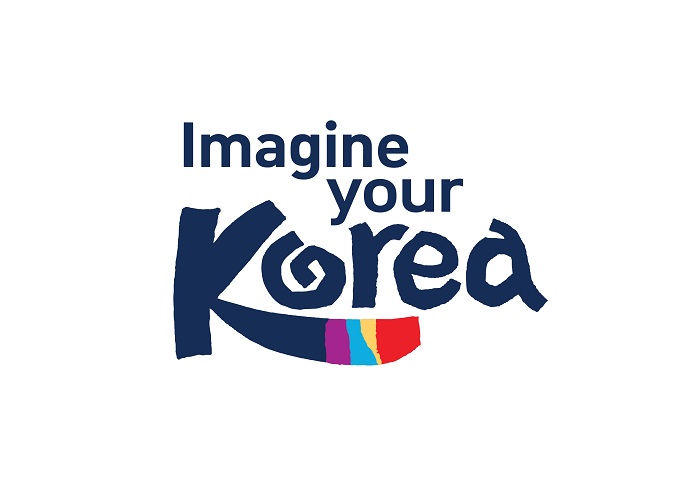
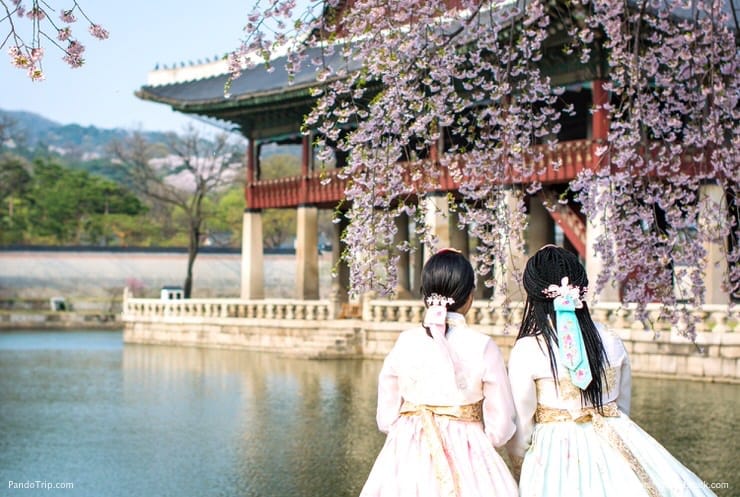 | 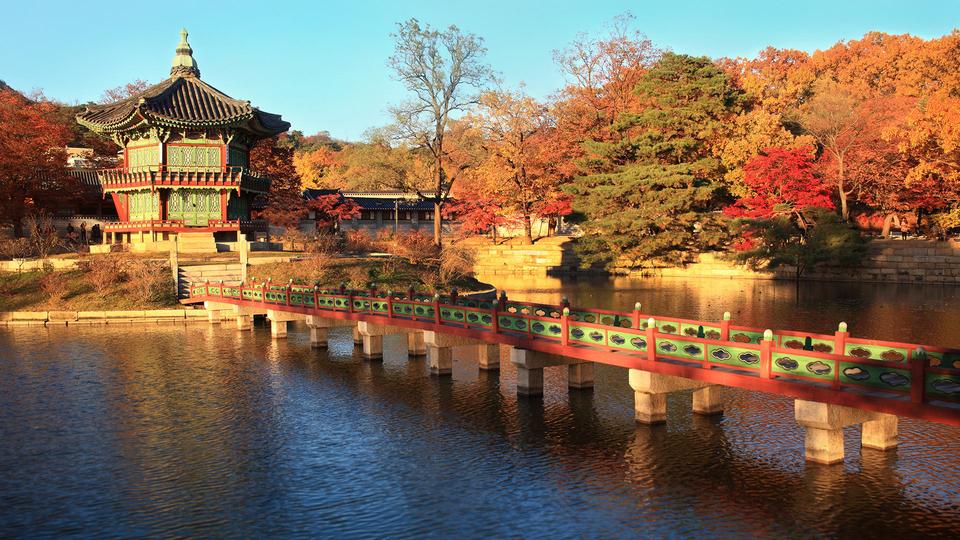 | /GettyImages-510409035-57a7657f3df78cf459161314.jpg) |
 | 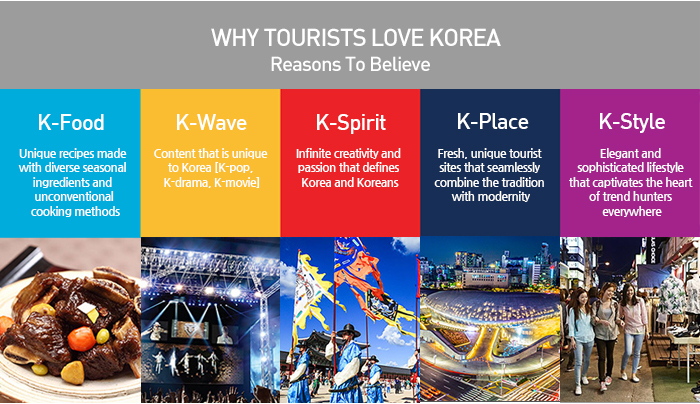 | 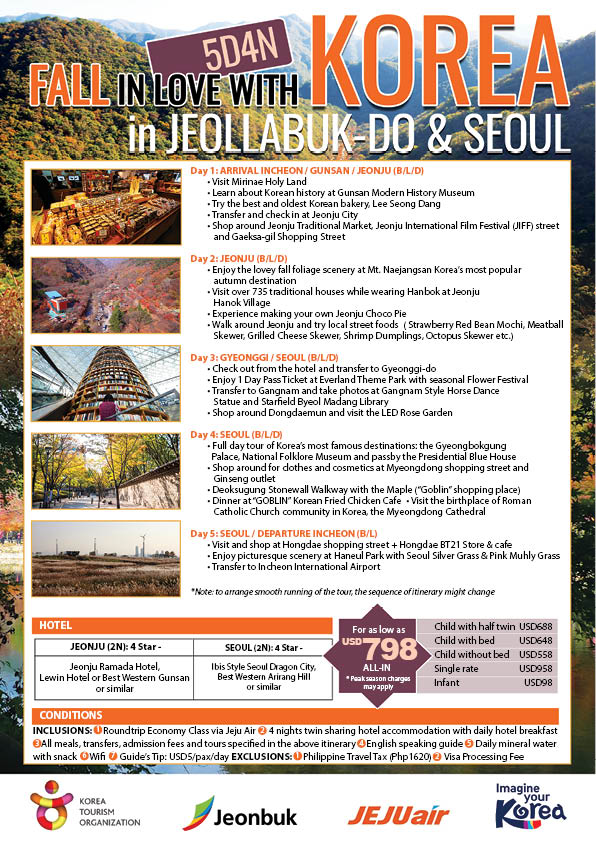 |
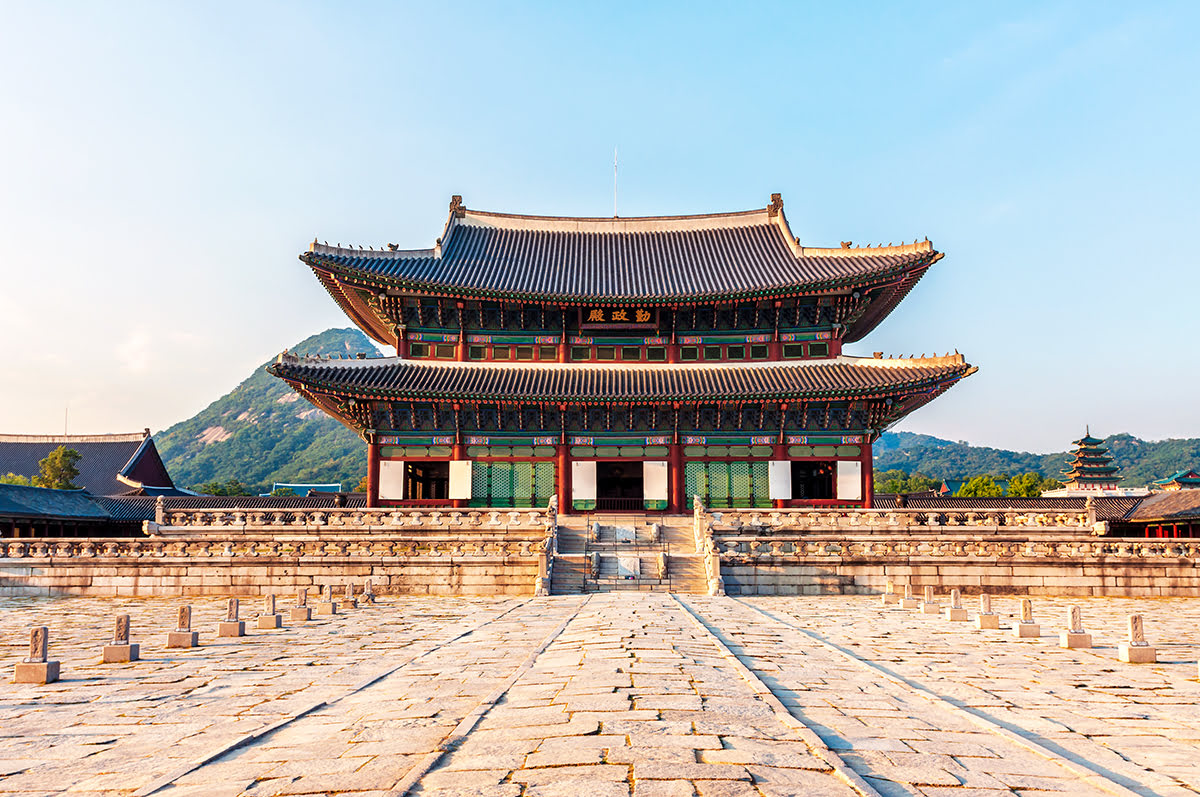 | 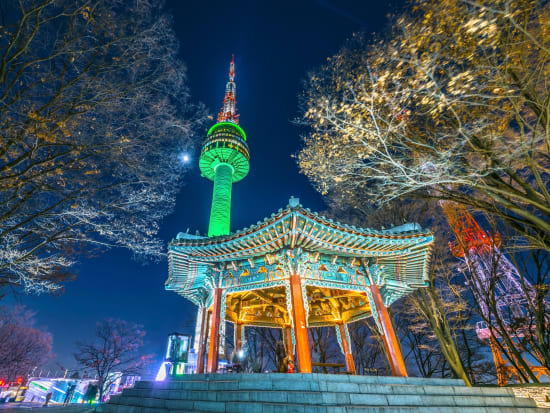 |  |
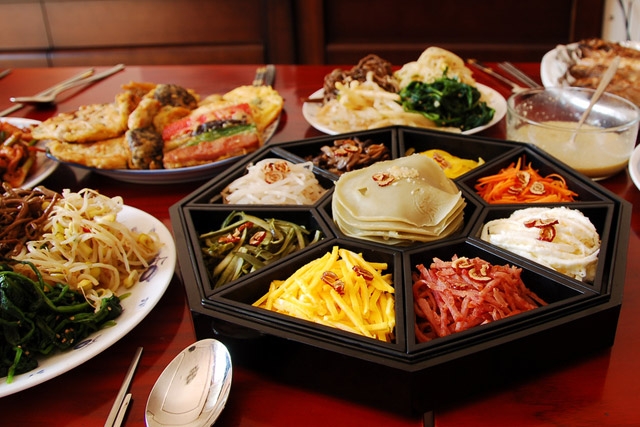 | 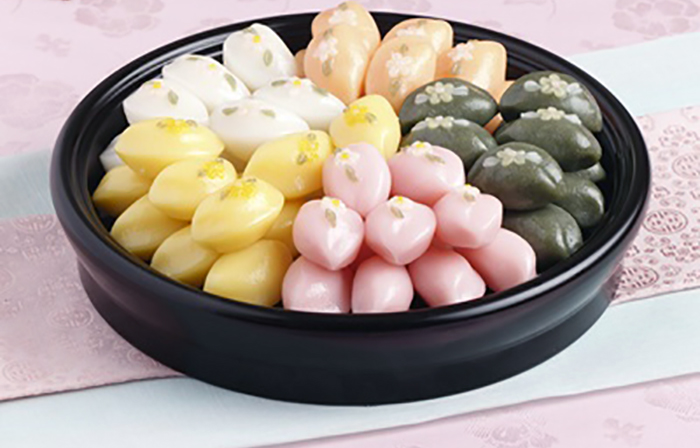 |  |
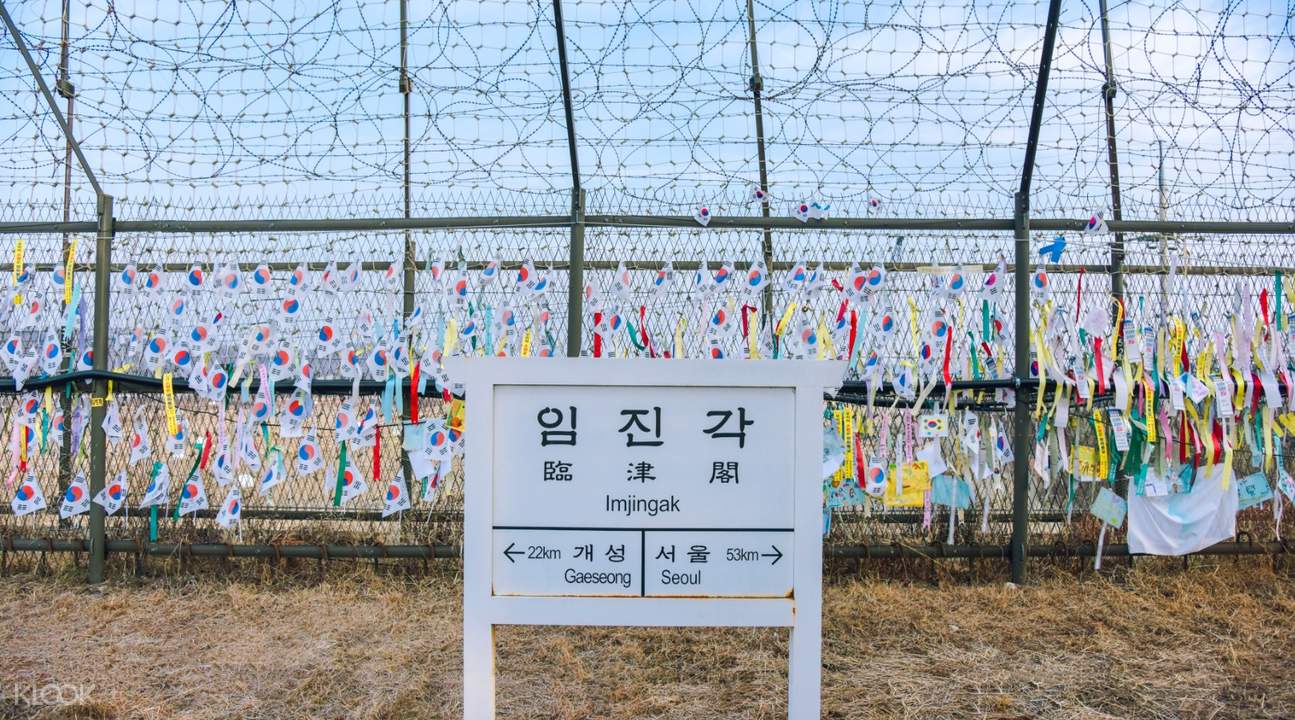TourfromSeoul.jpg) |  | 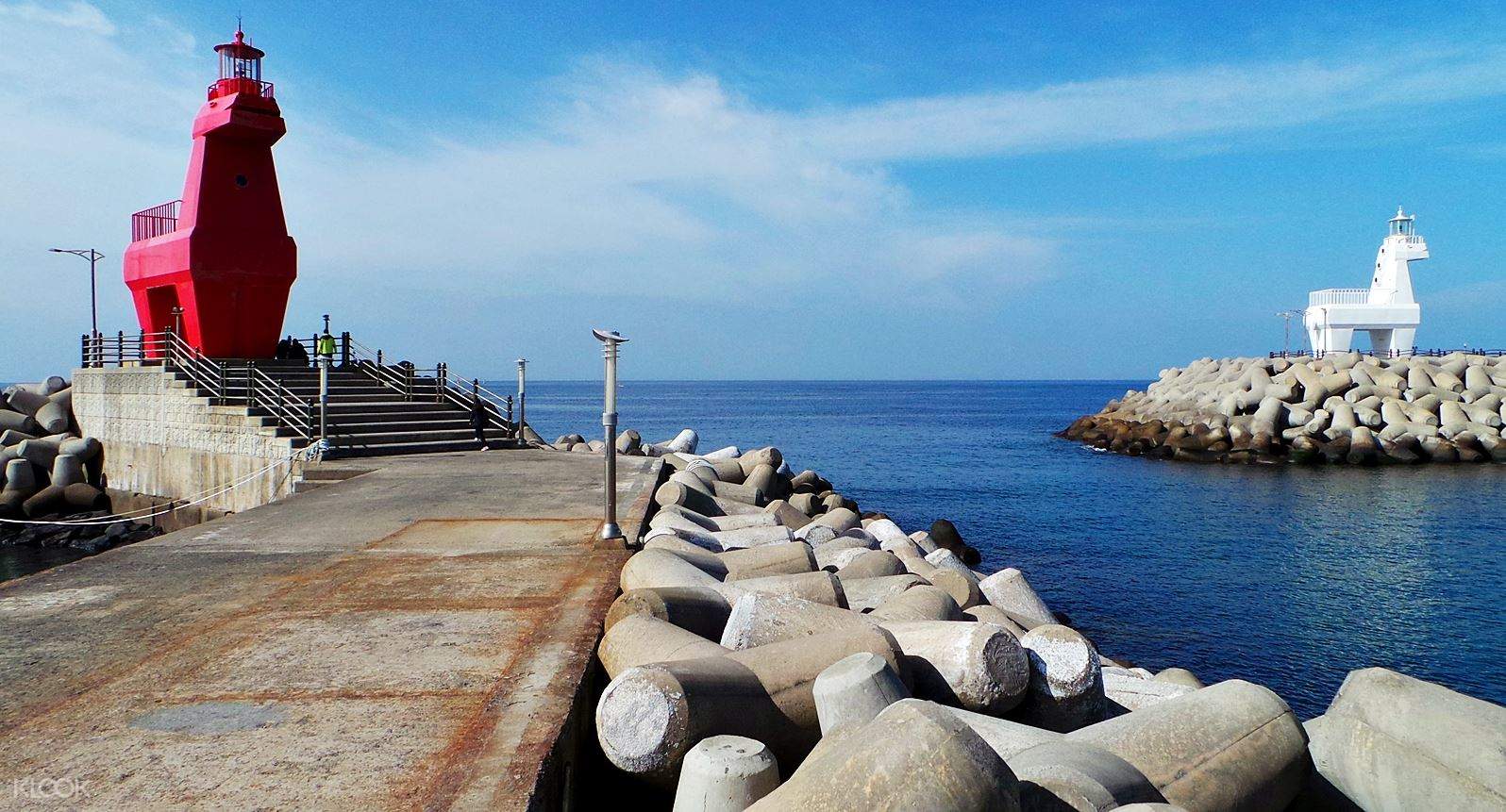 |

 |  | /GettyImages-510409035-57a7657f3df78cf459161314.jpg) |
 |  |  |
 |  |  |
 |  |  |
TourfromSeoul.jpg) |  |  |
 |  | 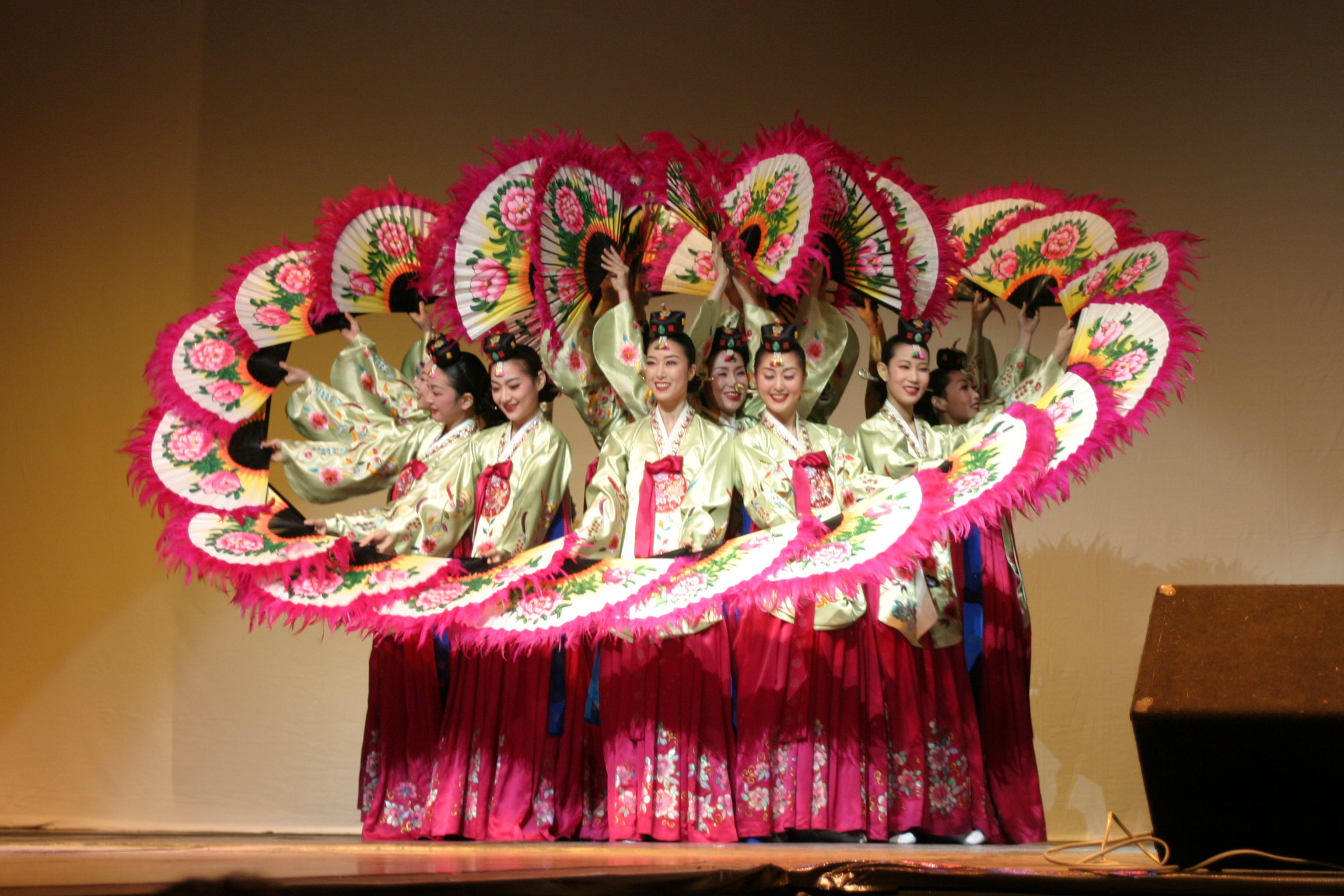 | 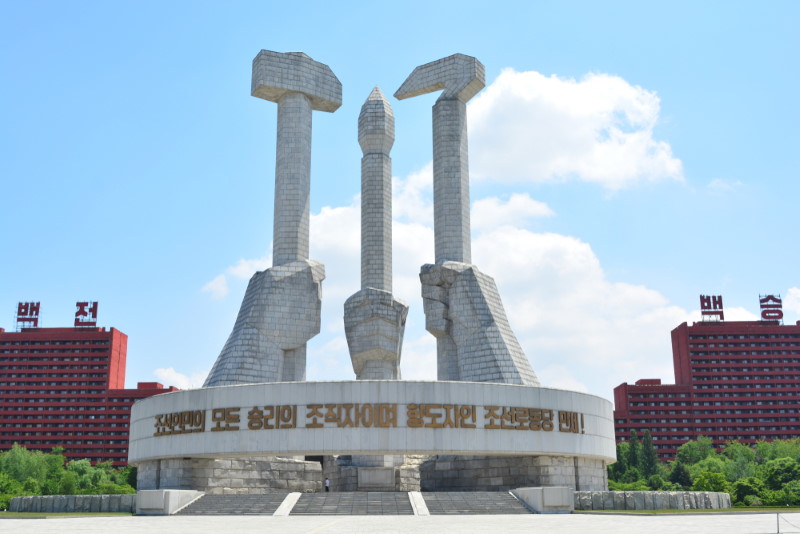 |
 |  |  |
 |  |  |
 |  |  |
 | 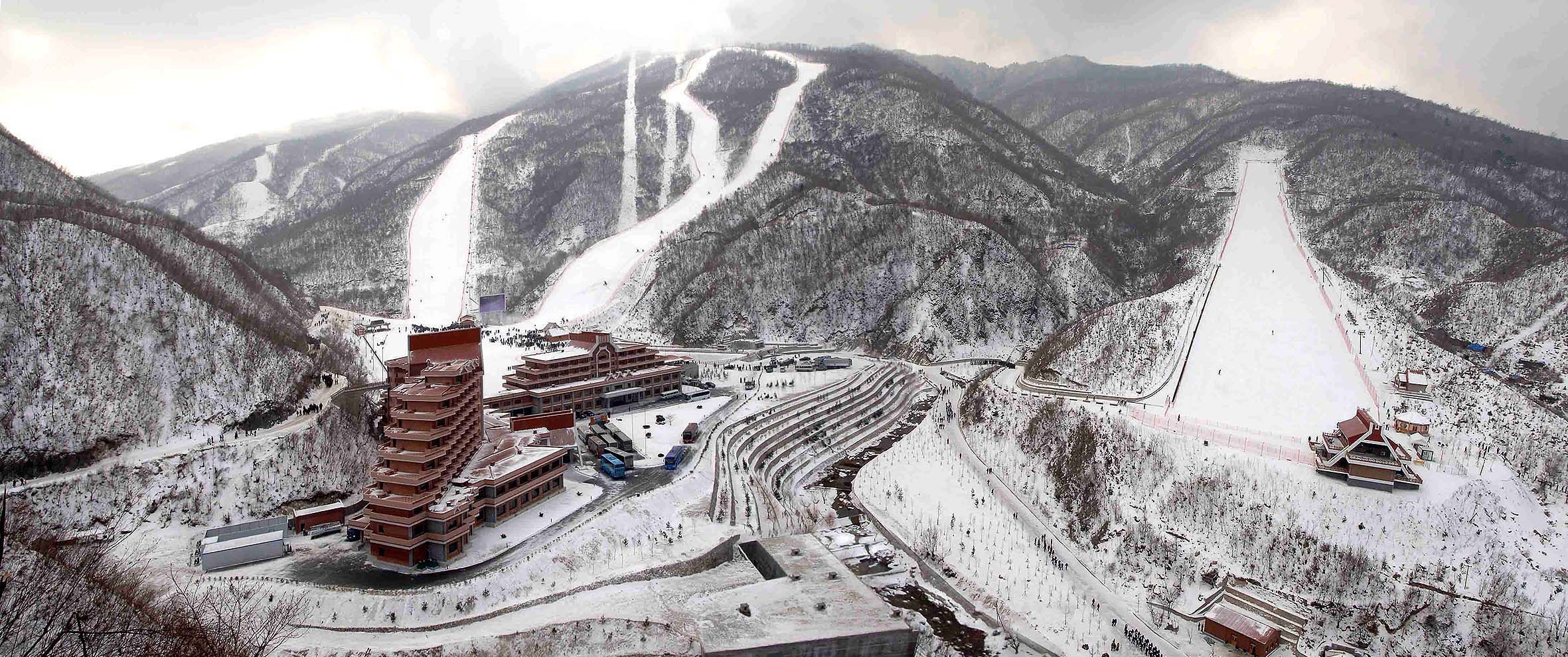 |  |
| Place Name | Location | Site Information |
|---|---|---|
Seoul Palaces 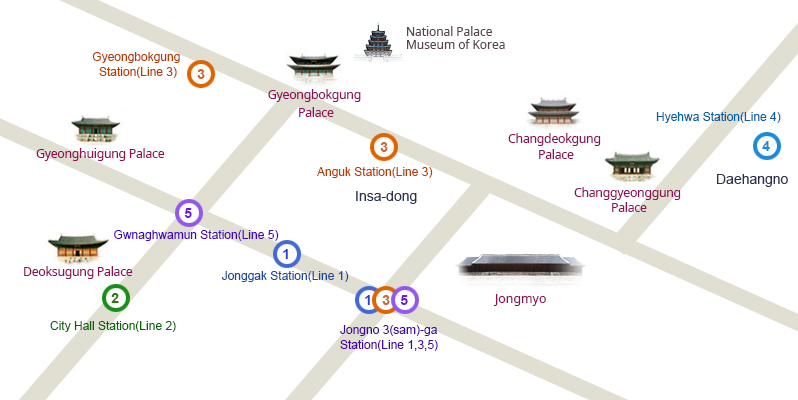 | See map | What was life like for royalty during the Joseon Dynasty? You can experience it for yourself by visiting the numerous palaces located right in the heart of Seoul. Seoul's five major palaces are Gyeongbokgung Palace, Gyeonghuigung Palace, Changdeokgung Palace, Changgyeonggung Palace, and Deoksugung Palace. The admission fees are affordably priced, usually just a few dollars, and visitors can tour around the grounds, see reenactments of historical royal ceremonies, dress up in royal costume, and even challenge themselves to a Taekwondo class. Since each palace offers something different, be sure to check in advance to see what programs and reenactments are offered. |
Myeongdong  | Myeongdong-gil, Jung-gu, Seoul | Myeong-dong is one of the primary shopping districts in Seoul. The cultural ministry primarily selected Myeongdong due to its accessibility through the Subway Station (Seoul Subway Line No. 4) and the other from Lotte Department Store at Euljiro. Due to many brand name shops and department stores line the streets and alleys the area is popular with locals and visitors. Common products for sale include clothes, shoes, and accessories. Unlike Namdaemun or Dongdaemun, many designer brands are sold in Myeongdong. In addition, several major department stores include Lotte Department Store, Shinsegae Department Store, Myeong-dong Migliore, Noon Square and M Plaza. The department stores carry many premium labels and other fashionable goods at reasonable prices. Myeongdong also has family restaurants, fast food, plus Korean, Western and Japanese dining options. Many restaurants in Myeong-dong specialize in pork cutlet and kalguksu. Other businesses include hair salons, banks and theaters. Myeong-dong Cathedral is also a well-known tourist attraction. It is pillar of the Catholic church in Korea and was built in the Gothic style. Behind the church is a quiet space for relaxation. |
Dongdaemun Market 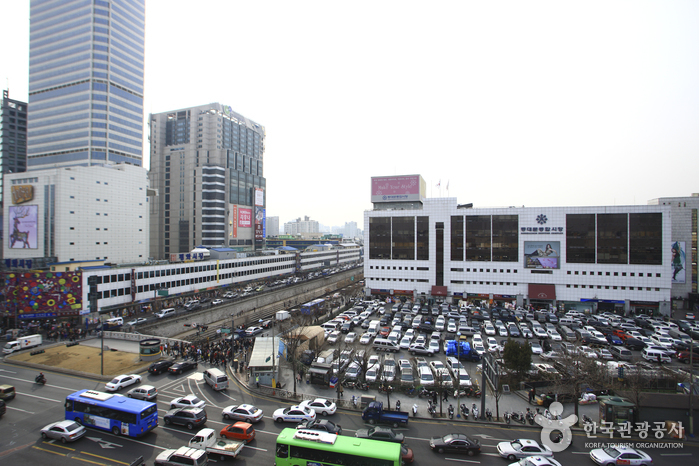 | 66, Jong-ro, Jongno-gu, Seoul | Dongdaemun has every fashion item imaginable: fabric, clothes, accessories, and wedding goods. The newest fashion trends, along with the newest fabric often make their debut in this market. It is home to the largest clothing suppliers in Korea, while aspiring designers also visit to hone and test their skills. The thriving community and industry is not exclusive to the local population but attracts many from beyond the borders of Korea.The diversity of affordable clothing attracts not just fashion leaders but the average consumer, as well. It has become a place frequented by major Korean and international buyers. Dongdaemun Market started as a traditional market in 1905 and experienced its first major transformation in the 1970s as it began to develop as a center of the textile industry, further contributing to the Korea's rapid economic growth the time. With the later construction of mega shopping buildings in the area, the market became reborn as the most famous fashion street in Korea. It has become an area of cultural preservation and supported through government advertisement. |
Lotte World 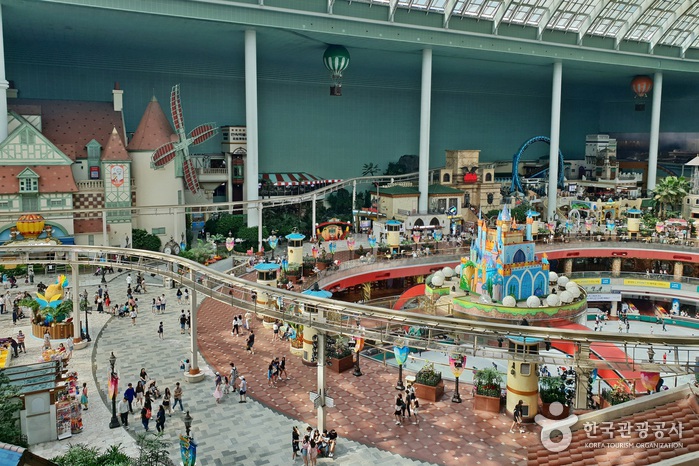 | 240, Olympic-ro, Songpa-gu, Seoul | Located in the heart of the city, Lotte World is the perfect spot for entertainment and sightseeing. It is a theme park filled with thrilling rides, an ice rink, different kinds of parades as well as a folk museum, a lake, and much more. About 6,000,000 visitors are welcomed every year, and about 10% of the visitors are foreigners. The structure inside makes use of the natural sunlight, and it is open for visitors all year round, regardless of the weather. Perfect for pictures and making memories as well! Lotte World is divided into a '’Adventure’ theme once you are inside the building, and outside is a ‘Magic Island’ theme next to Seokchonhosu Lake. Lotte World Adventure has certain districts representing different countries with various kinds of facilities and souvenir shops. You can enjoy watching parades, numerous films, laser shows, and a variety of international cuisines even during the holidays. Magic Island is situated outdoors, where the dazzling Magic Castle is located as well as thrilling high-altitude rides that you can't experience elsewhere. Be sure to also check out the peaceful walking trail around the lake. The Gyro Drop and Gyro Swing are the top pleasers– a steep drop with an altitude of 70 meters, or taste the thrilling sensation of being inside a tornado. You may need to take your shoes off before you get on since mostly likely they will come off during the ride. The Flume Ride is a long boat with a high-altitude wave, and the Spanish Pirate Ship swings at an electrifying 75 degrees. Besides the excitement of these rides, Lotte World also contains a variety of parades and laser shows. The 200 performers sing and dance to music in the World Carnival Parade, which adds excitement to the theme park. The Folk Museum is the most popular museum for foreign tourists. Folk cultural items are displayed and the items go back 5,000 years in Korean history as well as miniature villages, and a playground. The museum layout was arranged to attract the visitors' attention and the displays are easily understandable. In addition, audio-visual devices and miniature models will make it more enjoyable. |
Itaewon 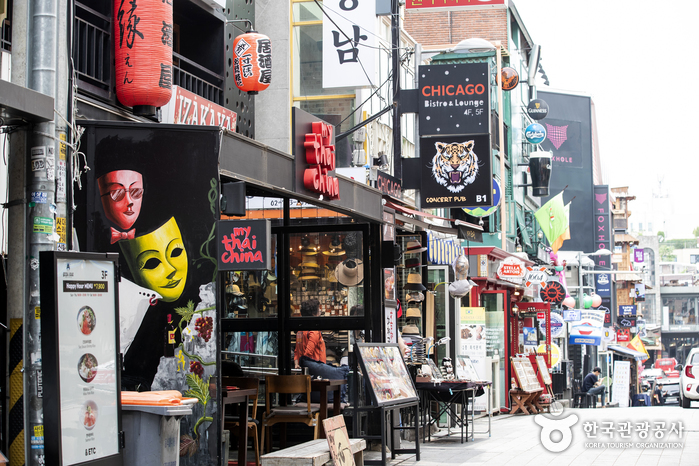 | Hannam-dong and Itaewon-dong in Seoul | Itaewon is a popular tourist and shopping destination for foreigners who visit Korea. There are over 2,000 stores clustered together with shopping centers, shops selling clothes, shoes, and bags, restaurants, recreation facilities, trading companies, travel agencies, and tourist hotels. The many English signs and many foreigners will make you feel as if you are not in Korea. Small-scale shops selling souvenirs were opened to the American army after the independence of Korea. Since then, shopping centers appeared to residing foreigners and tourists and with Seoul 1988 Summer Olympics, Itaewon rapidly grew as the representative shopping town in Republic of Korea. From the middle of 1990s, it changed from the American army centered street to global citizens’ street when more tourists came from Japan, Hong Kong, China, South-east Asia, Africa and Middle east region. In 1997, it was designated as a special tourist zone. Japanese and Chinese, as well as English, are available at most shops due to the fact that costumers are mostly foreigners, and all kinds of requests are made. Moreover, there are special restaurants to taste the unique foods of the world. There are Turkish, Indian, Pakistani, Swiss, and Thai, and of course, authentic American food as well. |
Hanok Stay 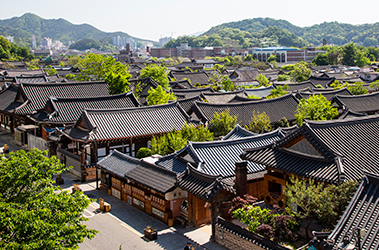 | Check individual websites | Hanok refers to houses built in the traditional Korean style. While tile-roofed and thatch-roofed hanoks were equally common, the former were typically noblemen residences while the latter were mostly houses of the commoners in the past. These days, most traditional hanok that are still used for housing have modern facilities installed within. There are two main charms to hanoks. The first is the unique heating system of ondol. A layer of stone is laid down below the flooring and when heated, the heat spreads up into every room of the house, keeping both the floor and the air surprisingly warm in winter. The use of ondol has influenced the Korean culture to a lifestyle of sitting on the floor, even in modern times. Because the floor is used for eating, sleeping, and general leisure time, people take off their shoes when entering a Korean home. This custom started with hanok and the ondol system. Experience the traditional culture for yourself through the many hanok villages in Korea, including Jeonju Hanok Village, Andong Hahoe Folk Village, Bukchon Hanok Village, Namsangol Hanok Village and Naganeupseong Folk Village. |
The War Memorial of Korea | Korea, with 5,000 years of history, with stood many severs foreign threats. Many lives have been and continue to be sacrificed to protect our country, our culture, and most importantly, our people. Many heroes questioned whether there could someday be a time when the youth of Korea could live peacefully in a world without war. These heroes that protected Korea now gather hands and pray for peace. Their hope in now the light that brightens The War Memorial of Korea. Today, a strange helmet of a nameless hero turns into Mudori, guardian of peace at the corner of The War memorial of korea. Mudori was born within the hearts of those who wished to live in a world without war. However, peace does not come easily and the birth of Mudori is a message for us that we must not forget : That without power to protect there is no peace at all. That power is within your heart. | |
 | The Independence Hall of Korea | Despite facing many trials and crises, Koreans have always overcome them while creating a rich culture and history indigenous to Korea. The Independence Hall of Korea shows the spirit and efforts of the Korean people in overcoming the national crises they faced in the modern period and especially during the Japanese colonial era. At the same time, the Hall conducts research on the history of Korean national efforts while educating the Korean people about their history. We hope that you will see the firm resilience of the Korean people and their history and heed their cries against foreign invasion and for the peace of all mankind by visiting our Hall surrounded by beautiful nature. |
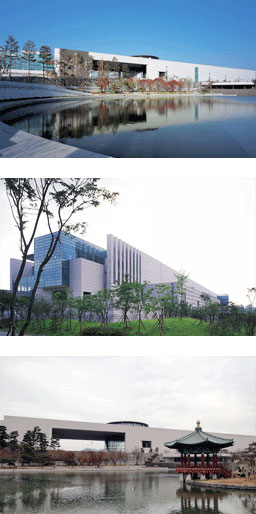 | National Museum of Korea | Yongsan, the geographic heart of Seoul, is backed by the expansive Mt. Namsan and fronted by the Hangang. Yongsan is also the true cultural center of Seoul, sitting just south of the five palaces of the Joseon Dynasty and the War Memorial, and north of the National Library and the Seoul Arts Center. The new museum, which boasts more extensive and convenient facilities than its predecessors, attracted more than 100,000 visitors in its first three days, reaching one million in attendance after 44 days, and ten million in about three and a half years. The NMK attracted 2,730,204 visitors, which ranked as the highest attendance figure in Asia and 10th worldwide. Reborn as a “cultural complex” that all Koreans can enjoy, the new NMK has updated its mission to not only to preserve and display relics, but also to host a variety of programs and cultural events in conjunction with the Children’s Museum and permanent exhibitions. The NMK plans to offer free admission to all of its permanent exhibits, thereby enhancing the popularity of the museum and altering the perception that museums are for one-time visits only. The NMK also reinforced its numerous exchange programs with overseas museums, holding special internationally themed exhibitions. |
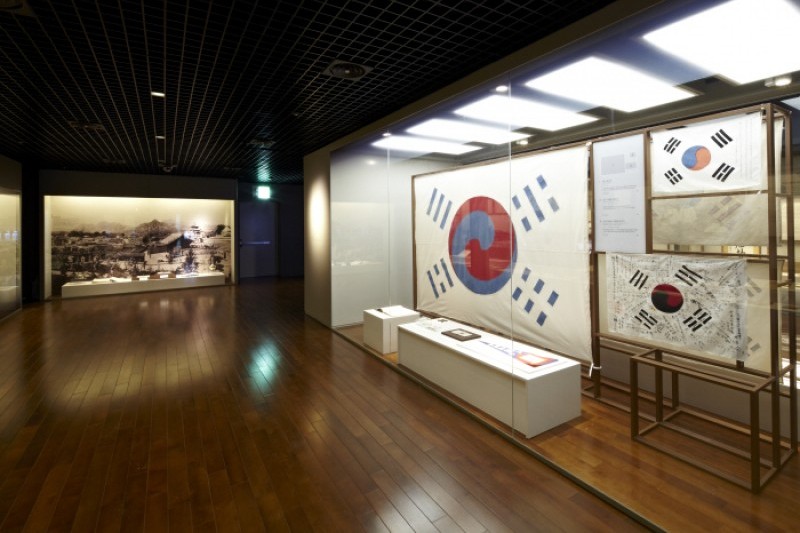 | National Museum of Korean Contemporary History | The history of the Republic of Korea (ROK) began with the Provisional Government of Korea in Shanghai, which was formed following the independence movement in March 1919 during Japanese colonial rule. The country underwent significant events such as liberation in 1945 and establishment of the government in 1948. This museum displays a range of artifacts and information associated with the country’s history. There have been many controversies about the interpretation of events in the country’s modern history. We at the museum will strive to accomplish objectives and reach balanced historical views, along with history-related reconciliation and healing, through discussions among those with different opinions. To such an end, we will ensure that this museum acts as a place where people with different historical views can coexist by shedding light on the history of citizens on a grassroots level, who faced painful time, and dark and negative facts about the country’s history, in addition to the history of the country’s industrialization and economic development. We will definitely hold sessions for discussions and consensus among experts, particularly those specializing in historiology and history education. |
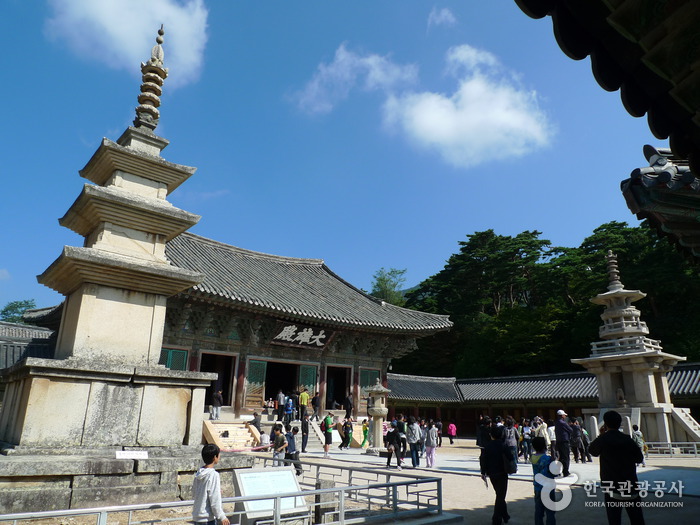 | Bulguksa Temple | 385, Bulguk-ro, Gyeongju-si, Gyeongsangbuk-do | Bulguksa Temple is the representative relic of Gyeongju and was designated as a World Cultural Asset by UNESCO in 1995. The beauty of the temple itself and the artistic touch of the stone relics are known throughout the world. Bulguksa Temple was built in 528 during the Silla Kingdom, in the 15th year of King Beop-Heung's reign (514-540). The temple was originally called ‘Hwaeom Bulguksa Temple’ or ‘Beopryusa Temple’ and was rebuilt by Kim Dae-Seong (700-774), who started rebuilding the temple in 751 during the reign of King Gyeong-Deok (r. 742-765) and completed it in 774 during the reign of King Hye-Gong (r. 765-780). Upon completion, the temple’s name was changed to Bulguksa. Bulguksa Temple underwent numerous renovations from the Goryeo Dynasty (918-1392) to the Joseon Dynasty (1392-1910), but was burned down during the Imjin War (Japanese Invasions, 1592-1598). Reconstruction started again in 1604 during the 37th year of King Seon-jo’s reign (Joseon Dynasty) and was renovated about 40 times until 1805 (during the reign of King Sun-Jo, 1790-1834). After this time, the temple suffered serious damage and was often the target of robbers. |
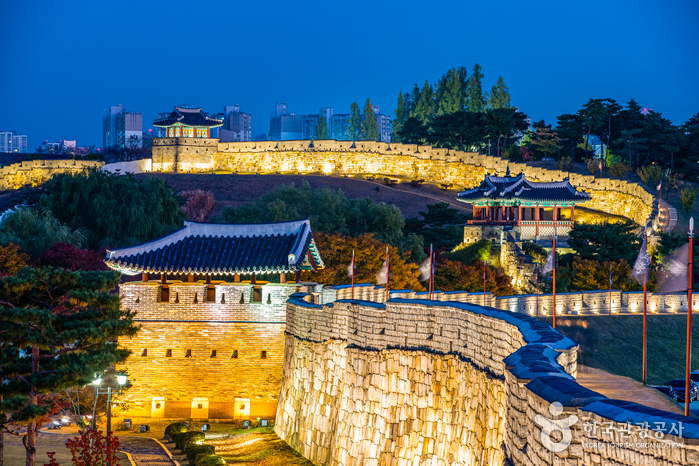 | Hwaseong Fortress | 910, Jeongjo-ro, Paldal-gu, Suwon-si, Gyeonggi-do | Hwaseong Fortress is an impressive structure from the latter part of the Joseon Dynasty (1392-1910) and the official fortress of Suwon-si, Gyeonggi-do. The fortress (constructed from 1794 to 1796) was built as a show of the King’s filial piety towards his father Jangheonseja and to build a new pioneer city with its own economic power. The fortress wall stretches for a total of 5.52km and has a great variety of military facilities that’s hard to find anywhere else. Four gates face each of the cardinal directions—Janganmun Gate (north), Paldalmun Gate (south), Changnyongmun Gate (east), and Hwaseomun Gate (west)—and the seven-arch style Sumun gates straddle the point where the nearby stream reaches the palace. Above the Sumun gates is a pavilion called Hwahongmun Gate. |
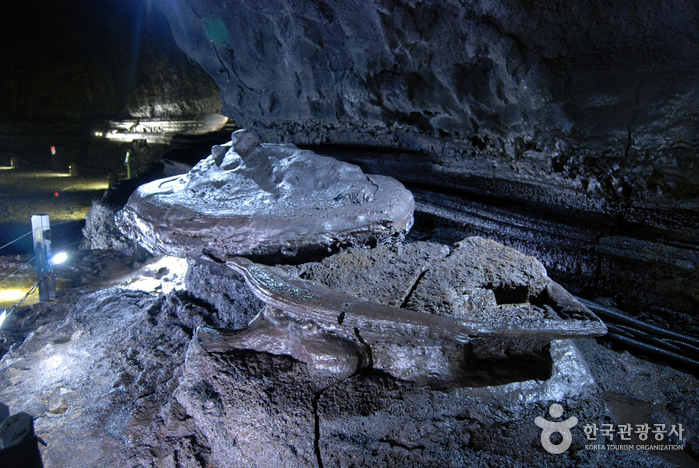 | Jeju Volcanic Island and Lava Tubes | 569-36, Seongyo-ro, Jocheon-eup, Jeju-si, Jeju-do | Jeju Island is the southern-most point of the Republic of Korea. It is an ellipsoid with the major axis lying southwest-northeast, with its area 183,160 ha. Volcanic activities within the Jeju Volcano began at the end of the Tertiary Period at a hot spot on the sea bottom. The island gradually reached sea level as a result of volcanic activities that began approximately 1.2 million years ago. In the center of the island, Hallasan Mountain rises 1,950 meters above sea level. The World Natural Heritage in Jeju consists of three sites covering a total of 188.4 square kilometers, which is 10.1 percent of the island’s total territory, and 1.2 square kilometers of publicly owned water surface. Hallasan Mountain has a vast array of plant and animal species and superb natural scenery that features the crater lake Baengnokdam (White Deer Lake) on the top, fantastic cliffs and waterfalls. The mountain has a unique vertical distribution of plants of diverse zones ranging from the subtropical, warm temperate and temperate to frigid zones. The Seongsan Ilchulbong Tuff Cone, created by undersea volcanic eruptions, offers a dramatic landscape. The fortress-like peak, with its walls rising out of the ocean, has exceptional exposures of its structural and sediment characteristics, including the crater preserving its original shape. |
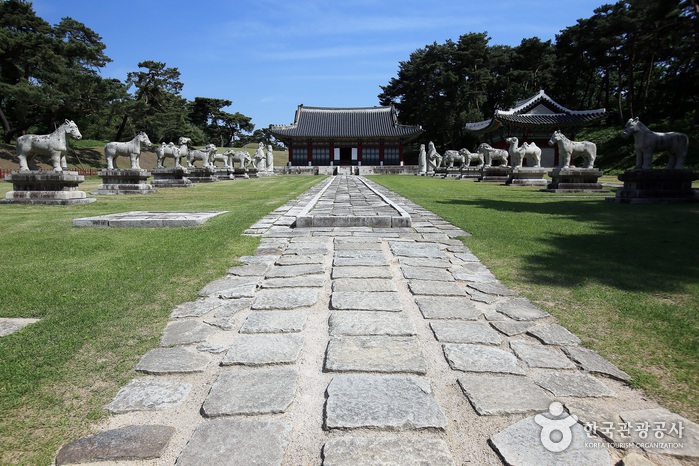 | Royal Tombs of the Joseon Dynasty | Around the suburbs of Seoul | The Joseon Dynasty (1392-1910) had 27 kings, from the first king, Taejo (r. 1392-1398), to the last king, Sunjong (r. 1907- 1910), during its 518-year rule. Those who actually occupied the throne during their lifetime and those posthumously given sovereign titles after their direct offspring ascended to the throne, as well as their spouses, are buried in 42 royal graves. Of the 42 royal tombs of Joseon, 40 are in South Korea, mostly in the Seoul metropolitan area, and two are in North Korea. The tombs were built to honour the memory of ancestors, to show respect for their achievements, to assert royal authority, to protect ancestral spirits from evil and to provide protection from vandalism. A royal tomb was a sacred place where the deceased could “live” in the afterlife amidst dynasty- protecting ancestral spirits. A royal burial ground was divided into three areas: the sacred burial area for the dead, the ritual area where the dead and the living meet, and the entrance area which was regarded as part of the mundane world. Each burial ground was designated to integrate with the surrounding natural environment to fully benefit from its propitious energies. |

